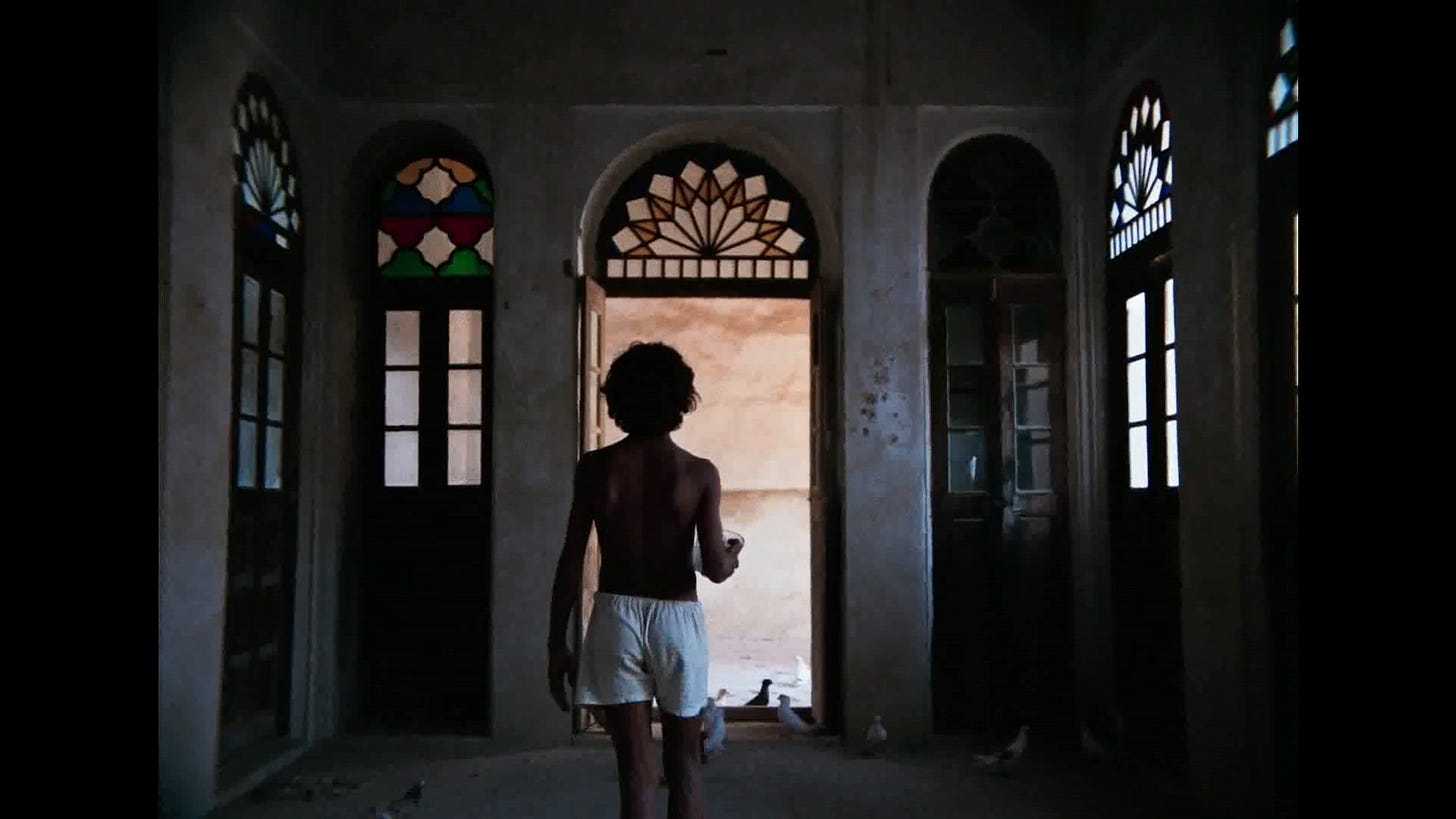The Night It Rained (1967, Kamran Shirdel) + Waiting (1974, Amir Naderi)
Monday 10th February, 6pm in the Richard Hoggart Building cinema
Join us on Monday 10th of February from 6pm (screening begins at 6:15pm) in the Richard Hoggart Building cinema for a double bill of Kamran Shirdel’s The Night It Rained (1967) followed by Amir Naderi’s Waiting (1974). The first film is 35 minutes long, and will be followed immediately at 6:50pm by the second film, which is 43 minutes long, so the total runtime is 1 hour and 18 minutes and the screening will conclude by 7:35pm.
Banned after its release for seven years, after which it won a national award and was subsequently banned once more, Kamran Shirdel’s The Night It Rained (1967) treats the unreliability of narrative and the encounter of local myth with public consciousness via the dissemination of information through media. Often compared with Akira Kurosawa’s Rashomon (1950), Shirdel’s film revolves around a news story of a heroic act by a village boy reported on enthusiastically in newspapers. Shirdel tracks down and interviews various personages in the story, from journalists to railway workers to the boy himself, encountering completely contradictory descriptions of the event.
The conceit, drawn from the analogous story of Rizali Khajavi, who became a national hero and was embedded in school textbooks as a role model for children to follow, suggests the postmodern challenge to what is termed, in Joep Leerssen’s and Manfred Beller’s writing on imagology, the “auto-image” – a country’s self-image, often formed propagandistically and intended to project both outwards to other nations, and inwards to its own citizens. In Shirdel’s scrutiny of the mythical event, the story of heroism devolves into a farce, wherein even the boy’s existence is called into question. Moreover, Shirdel brings us to ask, is there even an underlying reality to be grasped? The problem of fact and fiction, and the preoccupation with the role of media in disseminating information, prefigures later films of the Iranian New Wave that are being screened in our programme, such as Abbas Kiarostami’s Close-Up (1990). Swapnil Dhruv Bose describes Shirdel’s film as “one of the glaciers from which the later Iranian meta-documentaries like Kiarostami’s Close-Up derived their life force.”
Released seven years after Shirdel’s film, Amir Naderi’s Waiting (1974) “marked a departure from the realism of his previous genre films, blending illusory images of his youth in the south with documentary moments.” Depicting the often banal and repetitious tasks of his childhood, alongside the nascent desire of a boy for an idealised woman – invisible other than her hands – Naderi uses a dialogue-free and consciously stylised approach to evoke an oneiric and symbolic atmosphere, in which even ostensibly unremarkable moments are suffused with beauty and meaning. The film, hailed as “one of the most visually striking films in the history of Iranian cinema,” won multiple awards, and was suppressed for two years following its release, up until shortly before the 1979 revolution. Coming during a period in which Naderi closely collaborated with Abbas Kiarostami, the film evinces a mutual appreciation, and a close attention to detail within shots: the film radiates “a euphoric view of life and cinema, fixating on light and movement, and dazzling viewers with their heightened sensory sensitivity.”
For more on Naderi’s cinema, see this article in Cinema Without Borders.


